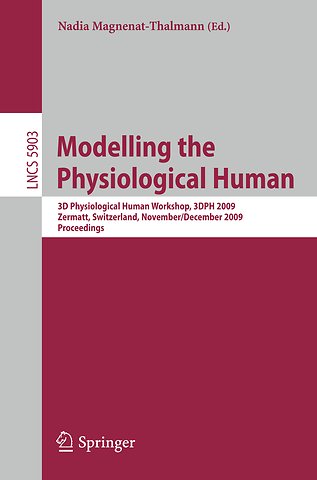Modelling the Physiological Human
Second 3D Physiological Human Workshop, 3DPH 2009, Zermatt, Switzerland, November 29 -- December 2, 2009. Proceedings
Paperback Engels 2009 2009e druk 9783642104688Samenvatting
Thisbook presentsrecentadvancesinthedomainofthe3Dphysiologicalhuman that werepresentedlastDecember at the Workshopon 3D PhysiologicalHuman 2009 that was held in Zermatt, Switzerland. This workshop was funded by the “Third Cycle in Computer Science of Western Switzerland” named CUSO, the European project Focus K3D (ICT-2007-214993), the European Marie Curie project 3D Anatomical Human (MRTN-CT-2006-035763) and the European Network of Excellence InterMedia (NoE-IST-2006-038419). 3D physiological human research is a very active ?eld supported by several scienti?c projects. Many of them are funded by the European Union, such as the 3D Anatomical Human project and those present in the seventh framework programme “Virtual Physiological Human”(FP7-ICT-2007-2). One of the main objectivesof the researchon 3D physiologicalhuman is to create patient-speci?c computer models for personalized healthcare.These models are used to simulate and hence better understand the human physiology and pathology.There is also a synergy in this research in the way medical information is distributed: to have any model available anytime, anywhere on any mobile equipment. A collection of scienti?c articles was proposed to highlight the necessity to exchange and disseminate novel ideas and techniques from a wide range of d- ciplines (computer graphics, biomechanics, knowledge representation, human– machine interface, mobile computing, etc.) associated with medical imaging, medical simulation, computer-assisted surgery and 3D semantics. The emphasis wason technicalnoveltyalongwith currentandfuture applications for modeling and simulating the anatomical structures and functions of the human body.
Specificaties
Lezersrecensies
Inhoudsopgave
Rubrieken
- advisering
- algemeen management
- coaching en trainen
- communicatie en media
- economie
- financieel management
- inkoop en logistiek
- internet en social media
- it-management / ict
- juridisch
- leiderschap
- marketing
- mens en maatschappij
- non-profit
- ondernemen
- organisatiekunde
- personal finance
- personeelsmanagement
- persoonlijke effectiviteit
- projectmanagement
- psychologie
- reclame en verkoop
- strategisch management
- verandermanagement
- werk en loopbaan

